NAWAMED: Fostering sustainable solutions for urban water management and planning in Sicily.
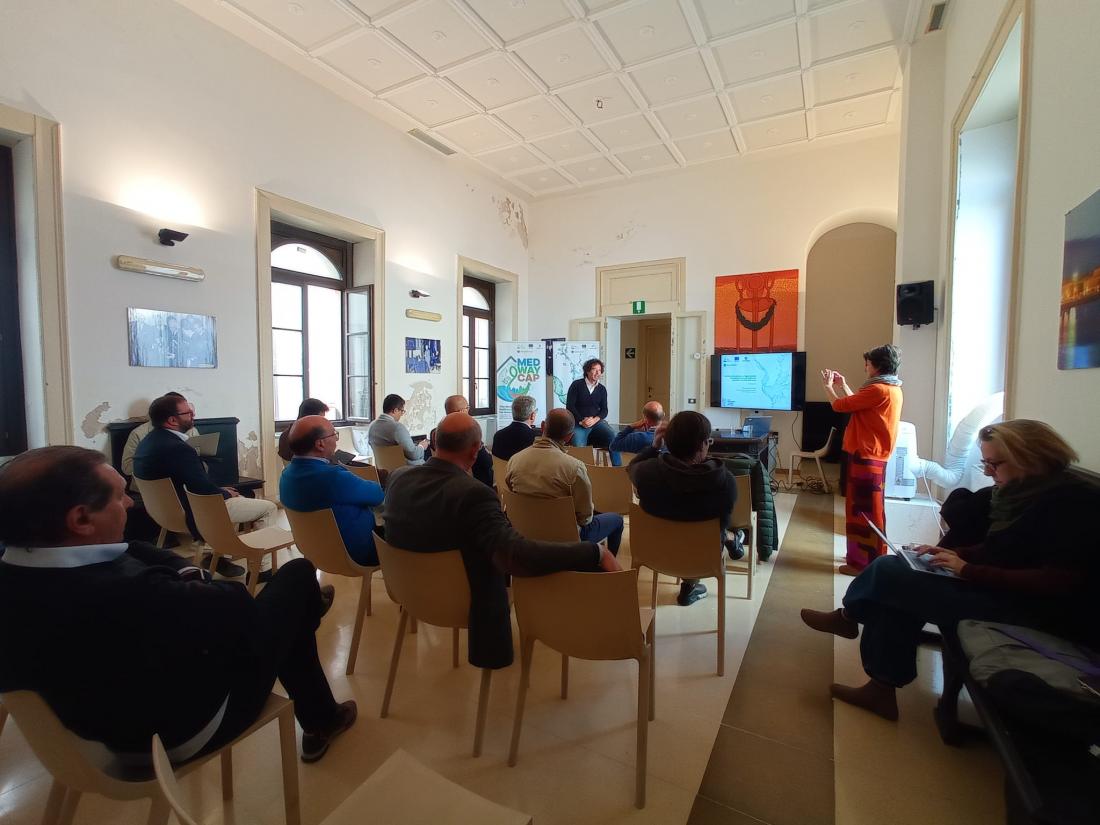
As a final stage of the NAWAMED project, the Technical Training and Policy Workshop on Non-Conventional Water (NCW) Management was held in Siracusa and Ferla (Sicily) for a total of 3 days, from 12 to 14 April 2023. SVI.MED - Euro Mediterranean Centre for Sustainable Development, in synergy with Iridra, project partners, and with the support of Municiplities of Syracuse and Ferla, further than the Network of Technical Professions of Syracuse, successfully gathered different professional, academic profiles, decision makers and students to improve technical skills, promote a common debate on water innovations and policies and strengthen a network of professionals in the field. Hence, more than 70 participants during the 3 days have had the opportunity to join the training and the technical visit with the coordination of Giulio Conte and Anacleto Rizzo (Iridra) and Francesco Giunta (Network of Technical Professions of Syracuse) among others.
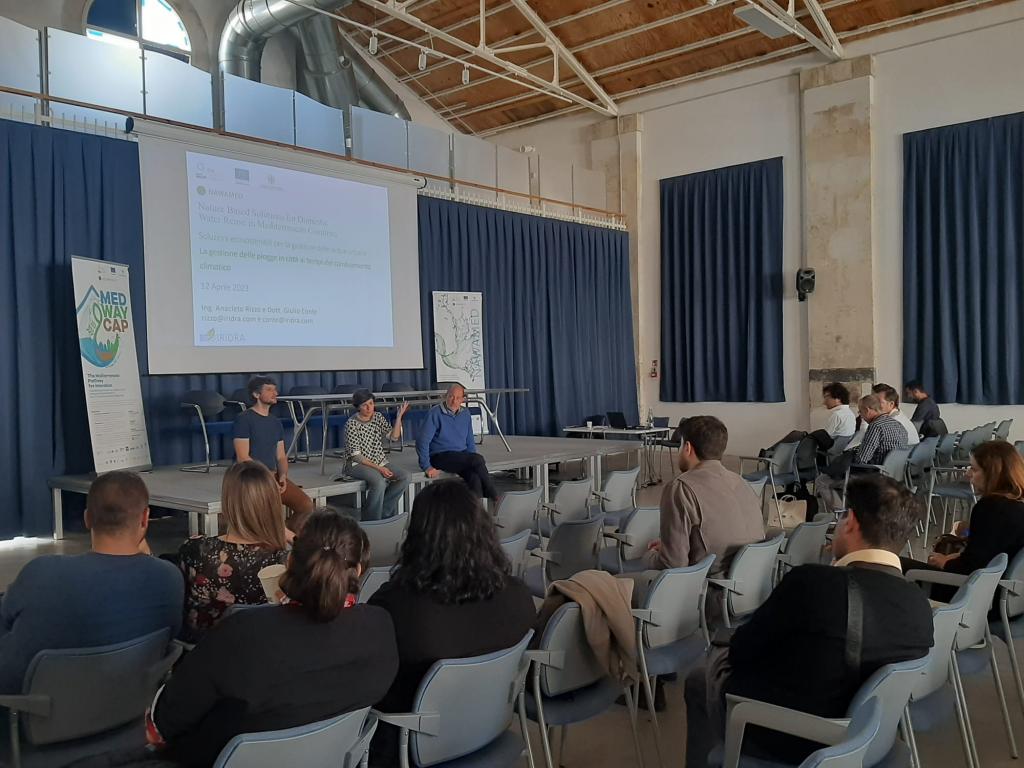
The first two days were focused on how to implement eco-sustainable solutions for urban water management, aimed at professionals involved in construction and urban planning, but also at agronomists and geologists, and followed the next day by a technical visit to the constructed green wall (Wall2Water) installed at the Valle dell'Anapo school in Ferla. Among the topics discussed was the need to provide more guidance on rainwater management and recovery, sustainable urban drainage and the reduction and optimisation of consumption. New buildings should be equipped with innovative water management solutions at low cost, and existing structures should be adapted. Consequently, this approach implies the need to focus not only on supply, but also on demand (which has indeed been the main approach of the conformity of European policies in recent years).
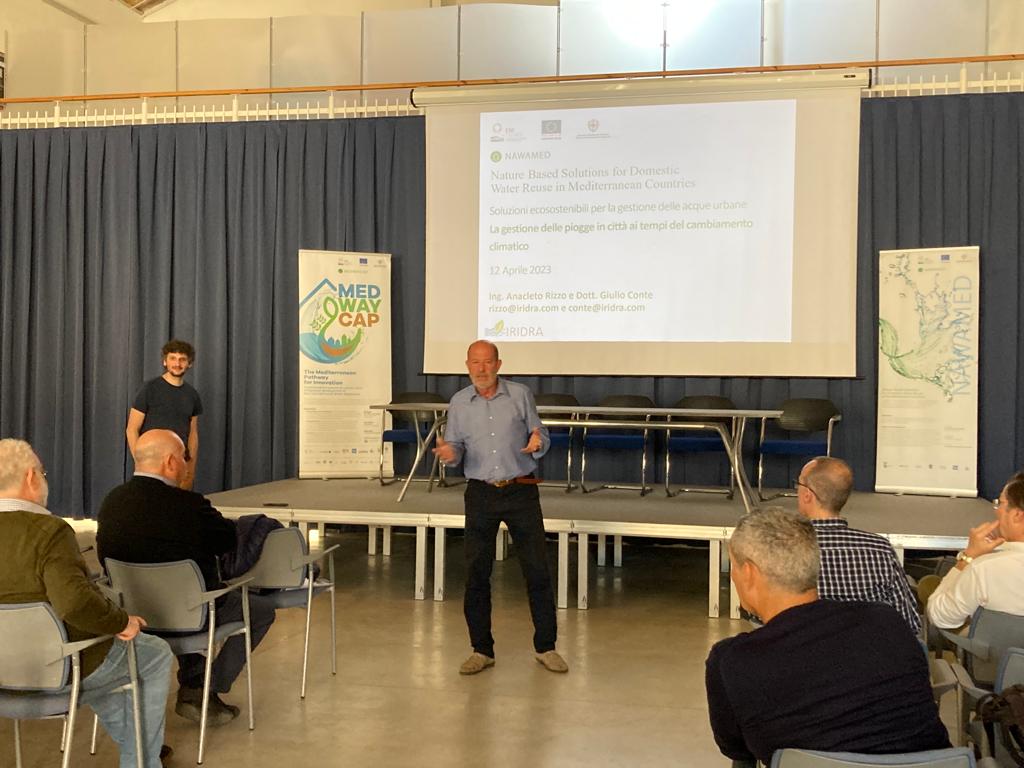
There was also time to discuss some study cases of interventions, such as the Water Plaza (Rotterdam, Netherlands) and the Nuovo Centro Ricerche Kerakoll, (Sassuolo, Italy). Finally, the first session also included practical exercises on how to implement these solutions in the conference building where the event took place. It is worth highlighting the consensus among the group to emphasise the need to create a multidisciplinary approach, bringing together a team with different technical profiles (from geologists to urban planners and engineers) when implementing the solutions mentioned.
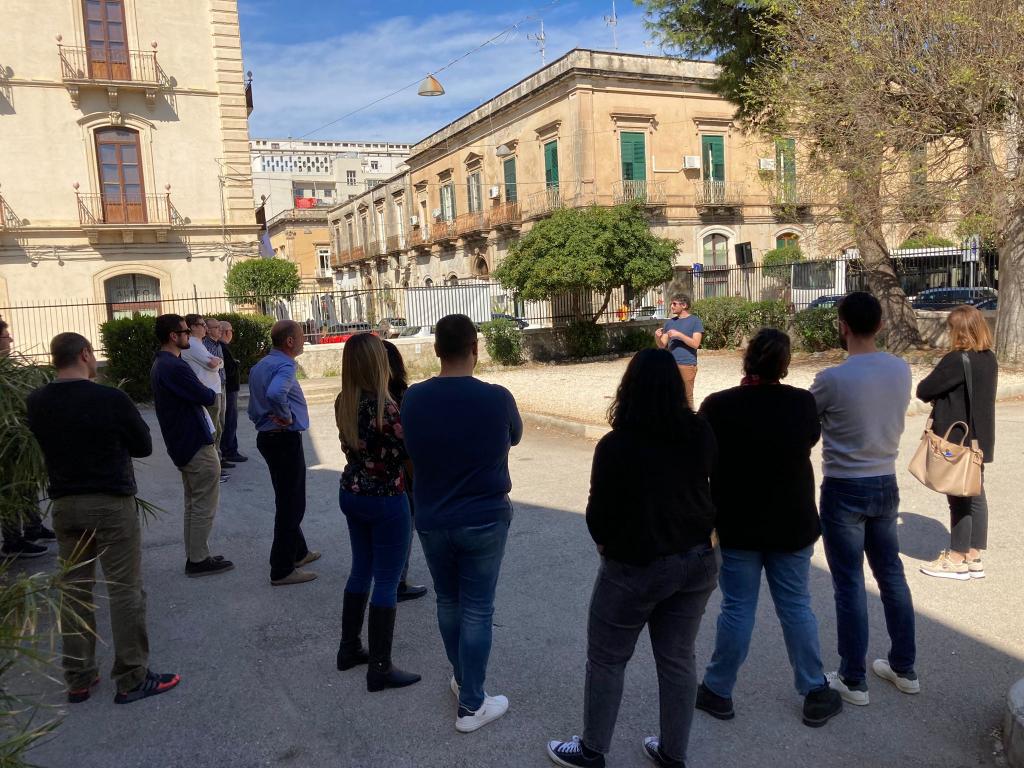
The technical visit was followed with interest and many questions were asked, especially about the economic feasibility of the pilot plant and its mechanism. With the students of the Luigi Einaudi Institute of Siracuse, a joint debate was held in the local auditorium on some of the main strategies to promote decentralised wastewater treatment and reuse of treated water in urban contexts, which raised relevant aspects such as medium and long-term sustainability.
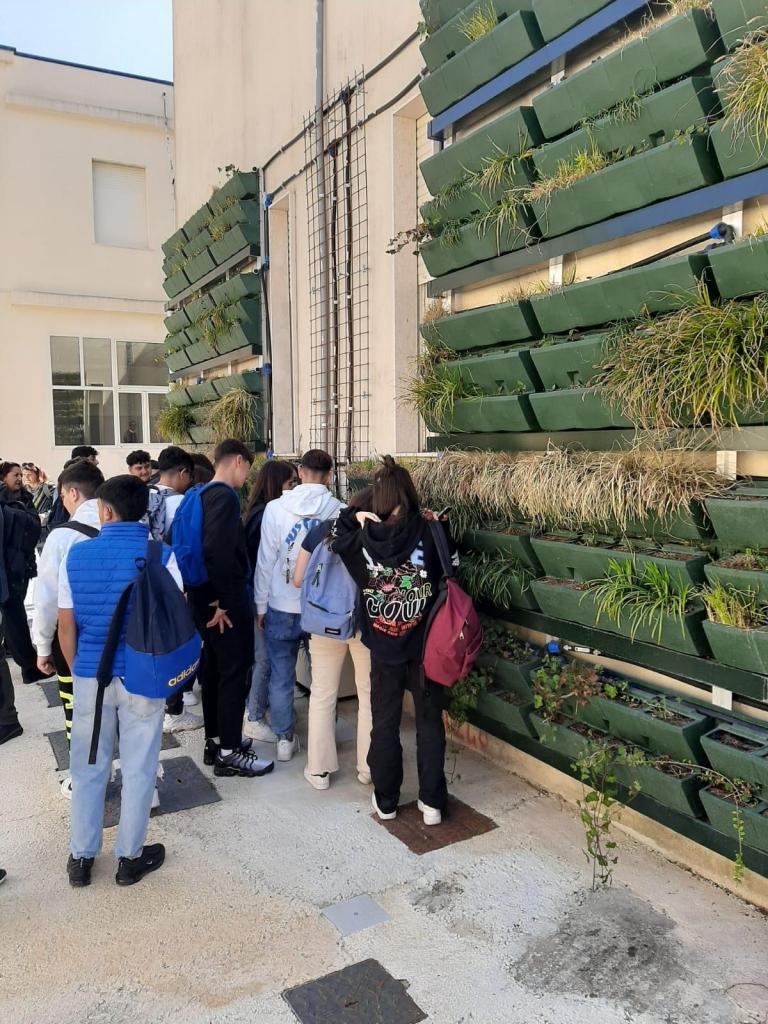
Today's experience of the Green Wall was fantastic! First of all I discovered many things, including the constructed wetland plants used to treat the greywater in the Green Wall, but also how the Green Wall is built and the process fascinated me a lot. It was also great to see it for the first time and find out how the water recycling system works.
Finally, the third and final day was dedicated to the presentation of the document produced and validated during the Fourth Water Table to professional institutions, municipalities and water companies, who were also invited to participate in the ensuing debate. The main issues discussed included the need to ensure greater transparency in the decision-making process - which ultimately requires the inclusion of public discussion and political debate between citizens and politicians, ensuring participatory planning as a crucial step - or the need to focus on 4 very important elements of water culture and management: tariffs, regulations, training and promotion of water culture. Moreover, the need to adopt 3 strategies (if possible) instead of using fresh water: reuse, infiltration and lamination. In this context, there was general agreement on the need to adapt a new way of designing buildings and cities to the climatic challenges of the future, and on the importance of "pushing" new buildings to incorporate these solutions.
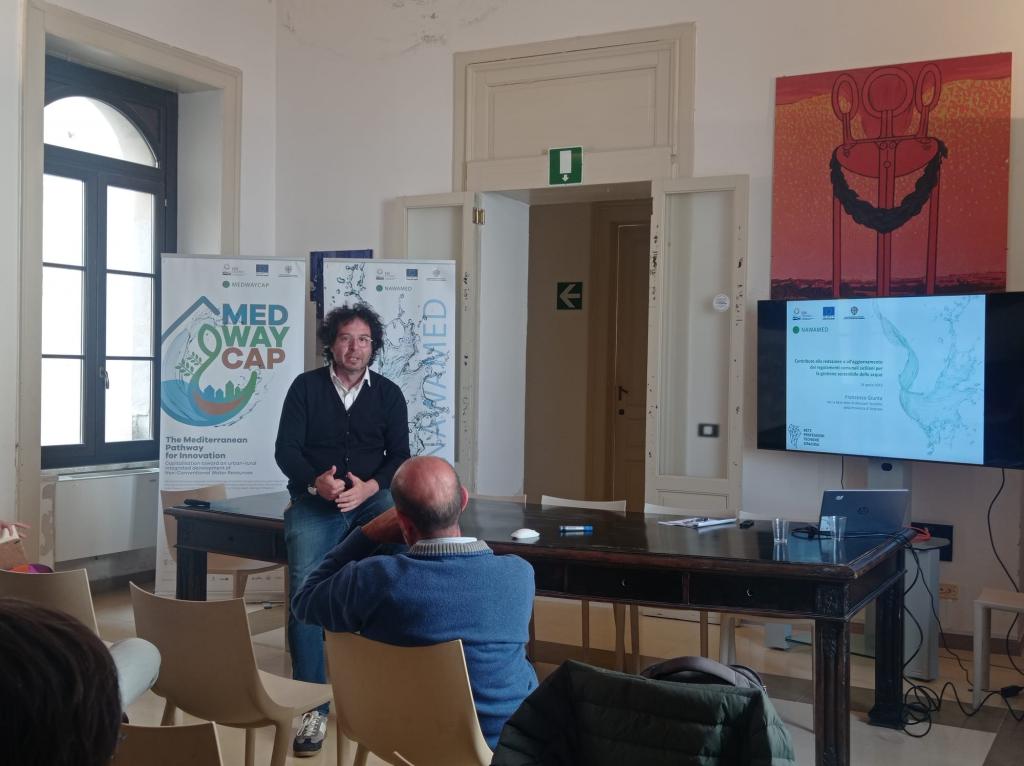
The feedback from the participants was very positive, as they pointed out that topics such as water reuse and NCW are not very well known and that the training was well structured, integrating oral presentations, debates and working groups. The collaboration started with the CERSU, the Regional Centre for Urban Studies of Sicily for the Fourth Water Table, is the beggining of a process that will continue after the lifespan of the project. Although the Nawamed project is coming to an end, we are sure that the seeds planted will continue to grow with new projects and initiatives in the field of efficient water management.







